|
" I think Bill Munroe's importance to American music is as important as someone like Robert Johnstone was to blues, or Louis Armstrong. He was so influential I think he's probably the only musician that had a whole style of music named after his band." Ricky Scaggs There are lots of styles of country music. Its difficult to choose one but I've decided to research Bluegrass more. I like the instruments traditionally used in bluegrass - fiddle, mandolin, banjo and guitar. Violins often double stop with open strings to underpin the rythmn and harmony. Unlike practically any other strain of american music, bluegrass can be traced - as the quote above says - to particular time and a particular group of men. Kentucky born mandolin player/bandleader Bill Munroe and a select handful of musicians he gathered in his band, The Bluegrass boys. Monroe and his band transformed the traditional country string band music into something fresh and exciting and revolutionary. They did this by giving it a syncopated beat along with close, him pitched lead and harmony vocals on favourites like "Uncle Pen" and "Muleskinner Blues" . Munro also elevated the mandolin from a accompaniment to fully fledged lead instrument and Earl Scruggs did the same for the five string banjo. Here he is paying Uncle Penn above at age 82.  Their music - which they forged more than fifty years ago has endured and has regained popularity in recent decades. Film soundtracks such as the 2000 feature film "Oh Brother Where Art Thou" has helped. It starred George Clooney and featured vintage bluegrass music in a quirky film. It also included contemporary new grass musicians like Alison Krauss. The soundtrack sold millions, won five grammy Awards and sparked another revival. Bill Munroe's Bluegrass Boys deserve most of the credit for the bluegrass style. The line up during he late 1940s was Earl Scruggs on five string banjo and vocals, Lester Flatt on guitar and vocals, Chubby Wise on fiddle, Cedric Rainwater and Bill Munroe himself on mandolin. To this day, the band's recordings are the bible for bluegrass. In 1948, two of the Bluegrass boys left and set up their own band (Flatt and and Scruggs). Their band, Foggy Mountain Boys was influential too with the banjo playing lead. In 1955 they added resonator guitar to the line up. With the spread of bluegrass mountain radio, others began to be influenced too. In particular the Stanley bothers started covering some of Monroe's songs int heir own mountain style. They enjoyed great success. They also feature on the O Brother Where Art Thou Soundtrack. Virginians, Jim and Jess McReynolds also became popular in the 1960s. They blended bluegrass with mainstream country and experimented with electric instruments. Also in the 1960 the Osbourne brothers from Kentucky became popular through country radio- which had often steered clear of bluegrass. They made this breakthrough by using distinctly unbluegrass instruments, like steel guitars, drums and pianos. Other ensembles such as Don Reno and Red Smiley and fiddler Kenny Baker would enrich and expand upon bluegrass tradition during the 1960s and 1970s. Newgrass By the 1960s Washington DC became the centre of bluegrass innovation. This was in partly because many musicians from Kentucky and Virginia had moved there in search of work. Young talented musicians were pushing the boundaries of traditional bluegrass using electrified instruments and eclectic styles. Bands like Seldom Scene and the Country Gentlemen emerged with more complicated lead instrumentals and smoother vocals. They were also beginning to sing songs written by the people like Gordon Lightfoot, Bob Dylan and even Eric Clapton. Since the 1970s, bluegrass has enjoyed a huge revival with bands like Nickel Creek, Alison Krauss, Larry Sparks, Del McCoury, IIIrd Time Out, Blue Highway, Claire Lynch and Rhonda Vincent. Here is a video of the fantastically tented Nickel creek. They started out as a straight bluegrass band but are transcending that now. And here is another great You tube link to Bela Fleck and the Flecktones. Bela Fleck is one of the most phenonomal banjo players around. He is also a great fiddler (listen to his recording of Down in the Swamp). His band has just got back together after a twenty year break and they are pushing the boundaries with their album "Rocket science". More on that in a further blog. The recording below is from "The Bluegrass Sessions: Tales from The Acoustic Planet Volume 2. Enjoy!
0 Comments
Your comment will be posted after it is approved.
Leave a Reply. |
Fiona Harrison
|


 RSS Feed
RSS Feed
